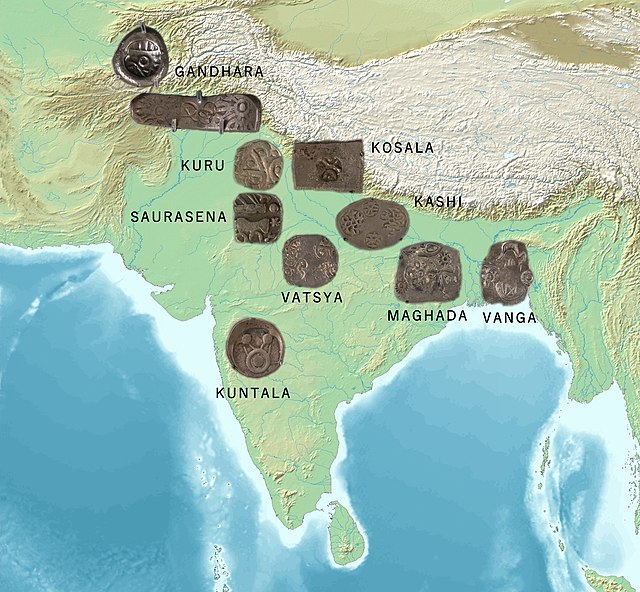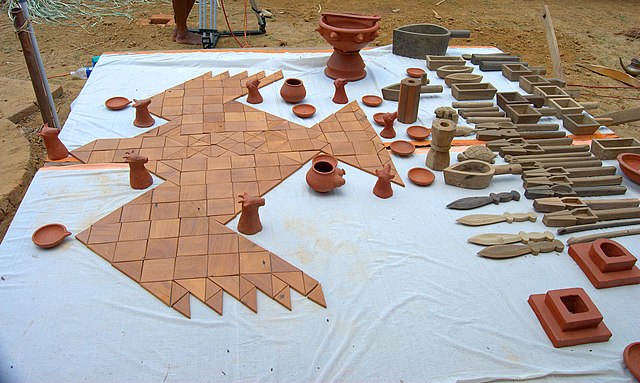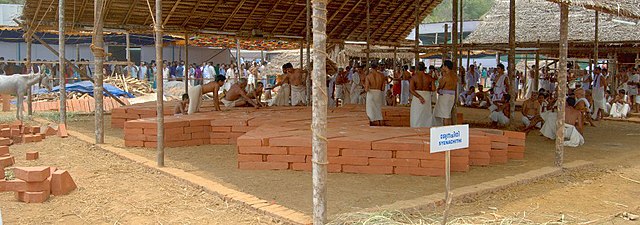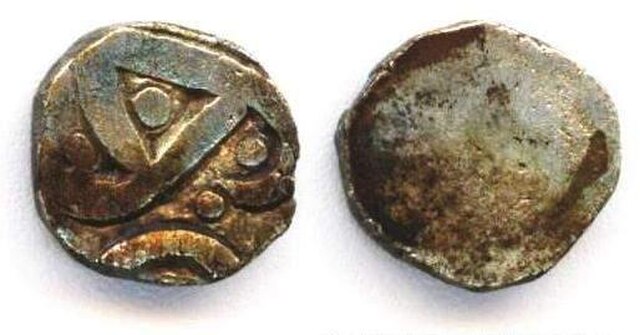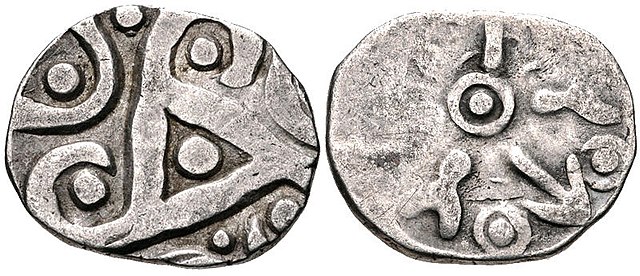The Coinage of India began anywhere between early 1st millennium BCE to the 6th century BCE, and consisted mainly of copper and silver coins in its initial stage. The coins of this period were Karshapanas or Pana. A variety of earliest Indian coins, however, unlike those circulated in West Asia, were stamped bars of metal, suggesting that the innovation of stamped currency was added to a pre-existing form of token currency which had already been present in the Janapadas and Mahajanapada kingdoms of the Early historic India. The kingdoms that minted their own coins included Gandhara, Kuntala, Kuru, Magadha, Panchala, Shakya, Surasena, Surashtra and Vidarbha etc.
Hoard of mostly Maurya Empire coins
Silver Tanka and Rupee coins from different sultanates and princely states of India
"The First South Asian coins", 400–300 BCE, British Museum. According to the British Museum, the first coins in South Asia were issued in Afghanistan c. 400 BCE, and then spread to the sub-subcontinent.
Punch-marked coin minted in the Kabul Valley under the Achaemenid administration. c. 500–380 BC, or c. 350 BCE.
Kuru was a Vedic Indo-Aryan tribal union in northern Iron Age India of the Bharatas and other Puru clans. The Kuru kingdom appeared in the Middle Vedic period, encompassing parts of the modern-day states of Haryana, Delhi, and some parts of western Uttar Pradesh. The Kuru kingdom was the first recorded state-level society in the Indian subcontinent.
Modern replica of utensils and falcon shaped altar used for Agnicayana, an elaborate srauta ritual from the Kuru period.
Modern performance of Agnicayana, an elaborate srauta ritual from the Kuru period
Silver, ½ Karshapana, Indian coin, “Babyal Hoard” type, of the Kuru Janapada (450 BCE – 315 BCE).
Pre-Mauryan (Ganges Valley) Kurus (Kurukshetras), Silver, ½ Karshapana, Indian coin, “Babyal Hoard” type, c. 350–315 BCE. AR 15 Mana – Half Karshapana (15 mm, 1.50 g). Triskeles-like geometric pattern/aix-armed symbol.



